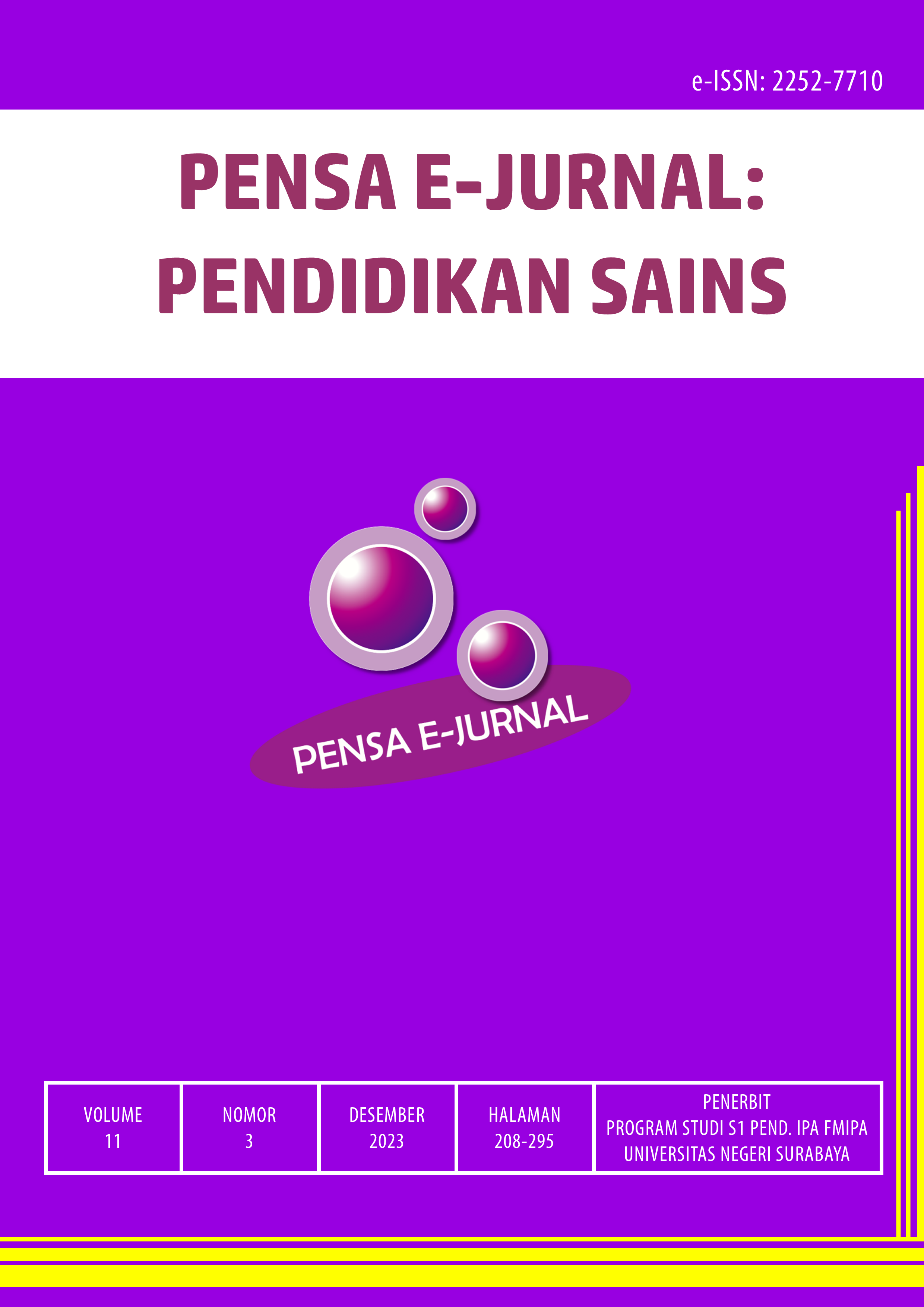ANALISIS AKTIVITAS BELAJAR SISWA DENGAN INTERVENSI MODEL PEMBELAJARAN EXPERIENTIAL LEARNING MENGGUNAKAN METODE PEER INSTRUCTION
DOI:
https://doi.org/10.26740/pensa.v11i3.53850Keywords:
experiential learning, peer instruction, learning activitiesAbstract
Learning that involves students directly needs to be implemented because such learning can make students memorable and strong memory. Learning that combines knowledge, skills and experiences from the past or directly to construct, can also make students easy to understand the material. The purpose of this study was to determine the implementation of experiential learning model integrated with peer instruction. Intervention study design was used in the study with 30 participants in class VIII in one of the junior high schools in Surabaya city. The collection technique used was observation with an implementation sheet and Stalling classroom snapshot. The data results obtained from three meetings were very well implemented. The ? score obtained indicates a good agreement relationship between the two observers. In student activities that are often observed by observers are conducting experiments and discussing. Student activity can be said in learning that runs active students. Engagement with peers can improve students' understanding because they are exposed to their peers' thinking and participate in creating shared understanding. The experiential learning model integrated with peer instruction can make students become active and directly involved in learning, and emphasize experience so that it will be memorable for students. This learning model can be a good alternative for teachers in teaching in the classroom.
Downloads
Downloads
Published
How to Cite
Issue
Section
 Abstract views: 239
,
Abstract views: 239
, PDF Downloads: 175
PDF Downloads: 175

















